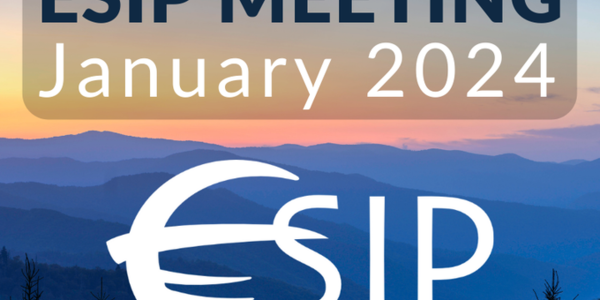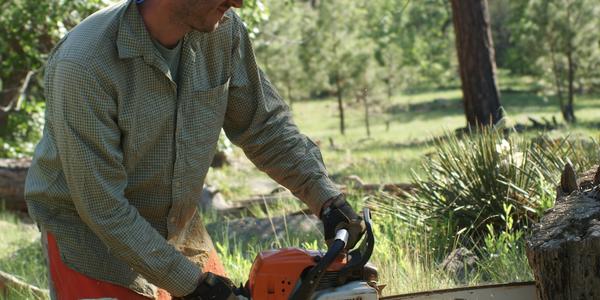
Here at NCEI, we aren’t just data—we are people. In our Humans of NCEI series, meet the awesome minds that manage one of the largest archives of atmospheric, coastal, geophysical, and oceanic research in the world. Get to know Carrie Wall, a scientist who leads the national archives for passive acoustic and water-column sonar data.
What is your specific area of expertise?
I have graduate degrees in Marine Science. My masters research focused on using satellite data to study the linkage between large migratory fish species caught by local fishermen and oceanographic features like ocean temperature, depth, and color. For my Ph.D., I focused on mapping the sound production of red grouper in the eastern Gulf of Mexico. Sounds were recorded using stationary recorders and robotic gliders. I heard A LOT of previously undocumented fish sounds.
What was your first job? How did it prepare you for your current position?
I had a ton of great internships during and after college. However, my first real job would be as an instructor at Vancouver Island University teaching Marine Ecology shortly after completing my dissertation. It was great because I really loved talking to students about the world of marine science and learning new ways to communicate complex topics to a broad audience. Both are huge parts of my job now.
How did you end up at NCEI?
I was just finishing research on deep sea fish sounds at the University of Victoria when a colleague from graduate school shared a job posting for a fisheries acoustic archive lead at the National Geophysical Data Center (now NCEI) in Boulder, Colorado. I was excited by this opportunity and felt it was a great fit for my acoustics and data management background. Now I get to support NOAA’s mission to ensure the health of our oceans by protecting one of our most crucial assets: data!
Here’s a fun fact: My first day was October 1, 2013—the first day of a 17-day-long government shutdown. I was able to see my office that morning and was then escorted out of the building along with everyone else. It was an interesting start to say the least.
What does a usual workday look like for you?
At dinner every night, my 5-year-old likes to guess how many meetings I had that day. So I guess I'd say my usual workday consists of a lot of meetings. I coordinate on various projects with colleagues across NOAA and the University of Colorado Boulder. That is in addition to making sure I stay in touch with my team and supervisees at NCEI. These days, it’s a lot of time on Google Meet.
What question are you asked most often when someone finds out what you do? How do you respond?
When I say that I lead the national archives for passive acoustic and water-column sonar data, I usually have to explain that passive acoustic data are the sounds recorded in an environment. I like to throw in the tidbit that fish make a variety of sounds! And I always have to explain what water-column sonar data are. I like to describe this technical field as scientists using sound to see critters in the ocean.
What sort of training and education would one need for your job?
Mainly, I collect marine acoustic data from scientists working across NOAA. Some are calculating the density of commercially important fish populations, others are mapping sunken ships or studying how underwater sound changes over time and place. Understanding and creating a community of these scientists would be impossible without my Masters and Ph.D. degrees in Marine Science and Acoustics from the University of South Florida. Plus my field work in the Gulf of Mexico was vital for my understanding of the complexities that accompany acoustic data collection and the programming necessary to process these data.
What inspired you to pursue a career in your field?
I spent a fair bit of time scuba diving on the Great Barrier Reef while studying abroad in Australia during my undergraduate years. That was what drove me to pursue graduate studies in marine science. The data collected to understand and protect these ecosystems are vital to scientific research now and in the future. Ensuring these datasets, especially those collected using taxpayer dollars, are available to the world for free for generations to come and to support new advancements in the field are incredibly important to me.
What projects are you working on now? Are there any upcoming projects that you are excited about?
I’m involved with several projects that center around building open source formats and interactive visualizations for complex or large volumes of acoustic data. These projects are fueled by the two national archives of passive acoustic and water-column sonar data that my fantastic team and I have established for NOAA and its partners over the past seven years. I have a grant through the University of Colorado Boulder (CU) to explore using artificial intelligence to extract patterns of interest from water-column sonar data. This work is being completed in collaboration with faculty and students from the CU Department of Computer Science. Another project I’m really excited about is with a CU undergraduate student to study blue whale calls off the West Coast of the U.S. I’m always thrilled to interact with students who are interested in science, data science, and data exploration.
What is your favorite aspect of your job?
The amazing people I get to work with, within and outside of NCEI.
What challenges have you had to deal with in your career?
Long hours, juggling numerous projects with diverse teams and deadlines, advocating for the science and the needs of the projects, and keeping up with an ever advancing world of scientific research and technological capabilities. The last part is also what’s most fun about my career.
Who are you outside of your career?
Playing with superheroes is a big thing at our house, so outside of my career I’m Wonder Woman to my two little boys, a.k.a., The Flash and Batman.
Last country visited?
Canada! My husband is Canadian, and we were visiting his friends and family in Vancouver, British Columbia, with our boys. We look forward to being able to travel again.
*Please note that all of the information was current through the publication date.





